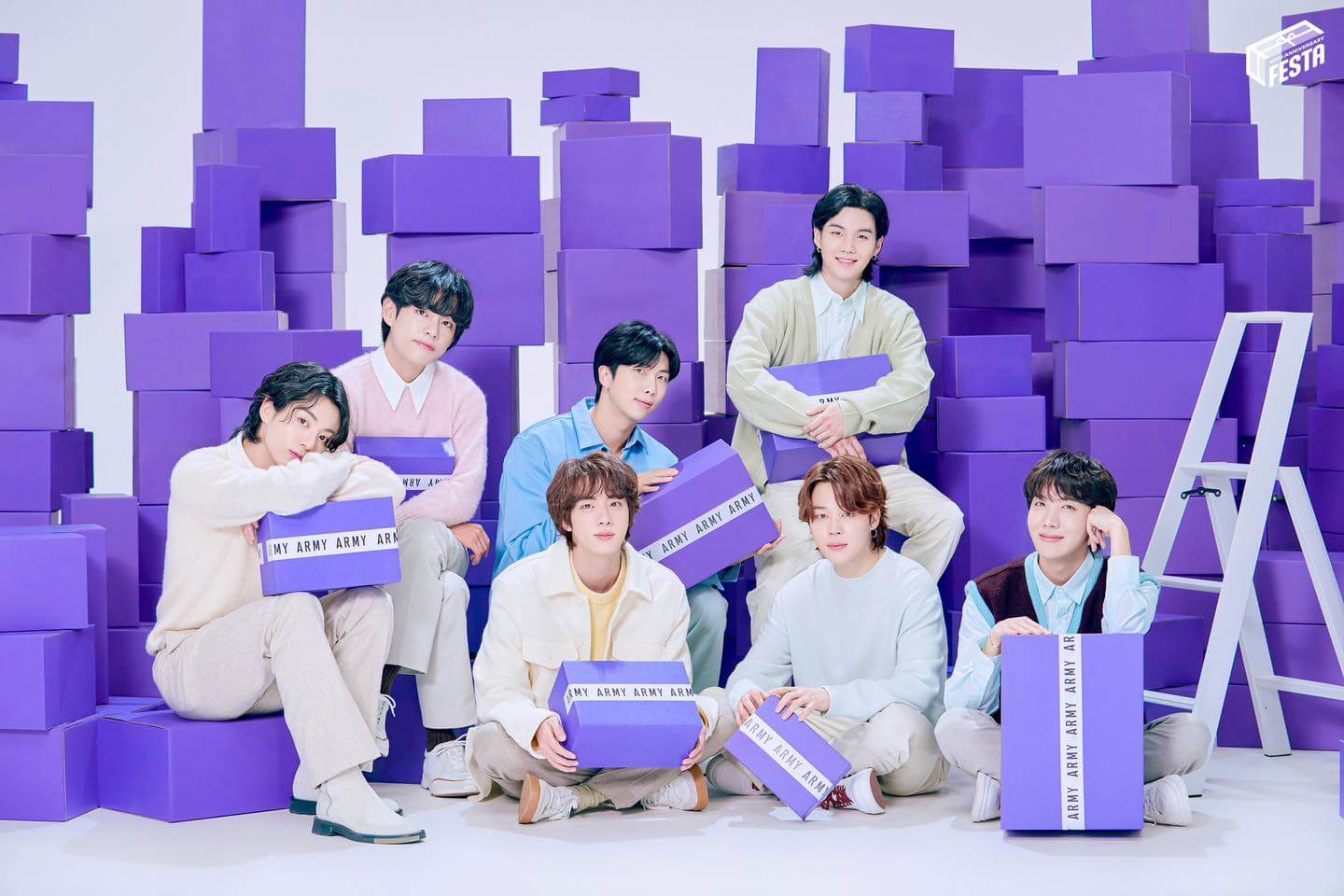I walked into a sea of purple, and the world shifted beneath my feet. Purple nails, purple hair, purple clothes — even purple hijabs — all moving in unison with an energy that was at once electric and strangely intimate. Hours before the concert began, the crowd had already transformed an ordinary suburb of Seoul into a festival of devotion, a global gathering that defied borders, languages and expectations.
On June 13, the first day of the two-day finale of J-Hope’s world tour at Goyang Sports Complex, I was handing out postcards promoting the exhibition I co-curated, “Presence in Absence: The Art of BTS Chapter 2.” The exhibition explores how 20 fan artists from 13 countries expressed their feelings during BTS’s temporary absence for military service — a period often referred to by fans as “Chapter 2” — demonstrating how the artistic power generated by the fandom brought a fresh perspective to contemporary art discourse.

Though my connection to BTS was more professional than personal, what I witnessed was truly astonishing. Whenever I handed out a postcard, people smiled, thanked me warmly and often lingered. Many reached into oversized tote bags or backpacks to offer something in return: chocolates, biscuits, jelly candies, keychains, hair accessories or bracelets — each neatly wrapped, many adorned with J-Hope or BTS stickers. One person gave me a set of stickers, each marked with a single letter from “BTS,” while another pressed an “Army” sticker into my palm. A woman in a purple hijab offered a single piece of Uzbek chocolate, wrapped in blue foil, and in our brief exchange of glances, I felt a quiet, human connection that needed no translation.
I felt an unexpected pride — here, in a Seoul suburb, was a living embodiment of the global village. By the time I drove home, Seoul seemed transformed. The National Assembly building rose with new grandeur, Yeouido’s skyline shimmered in the fading light, and the fountains of Jamsu Bridge danced across the Han River. These were sights I passed every day, yet seen through the eyes of a foreign visitor, they suddenly felt fresh, vivid and unexpectedly beautiful.
When my exhibition opened from June 21 to 29, several hundred visitors from nearly 30 countries arrived. Their joy was palpable. Upon entering the space, their faces lit up with delight, and some remarked that experiencing fan art accompanied by BTS’s music felt like “paradise itself.” Many lingered for hours, sitting on benches, immersing themselves fully in the exhibition.
The contrast in engagement was immediately noticeable. Korean visitors accounted for only a small fraction of the total — under 5 percent by my rough count — and their approach to the exhibition differed markedly. Most entered wearing masks, quietly observing the pieces before leaving without comment. Few initiated conversation, and some mentioned that the venue was harder to reach than expected. Others critiqued certain fan artworks, claiming they “barely resemble the member they support,” even though the works were never intended to reproduce exact likenesses.
It has been over a decade since BTS debuted, and their fans — particularly in Korea — have grown older. For some, attending a fan art exhibition may be a slightly awkward or self-conscious experience, given social expectations or the typical age gap in fan spaces. Yet paradoxically, many Korean fans seem less aware of BTS’s global impact, even as the group continues to top charts worldwide and is recognized as a defining symbol of the Korean Wave. A survey by Korea’s Ministry of Culture and affiliated institutions, spanning 28 countries and over 26,000 participants, ranks BTS as the most popular K-pop group worldwide for seven consecutive years, with 24.6 percent of respondents naming them their favorite K-pop artist.
In Korea, however, K-pop is woven into daily life, and fandoms are often intensely loyal to a single group or member, which can reduce interest in other acts. BTS, despite their decadelong career, may seem less salient to some domestic fans — an irony given that in the very country of their origin, their global significance can appear almost invisible.
For international fans, BTS represents discovery, community and pilgrimage. Traveling to Korea to experience anything BTS-related is an act of devotion that can reshape entire travel itineraries and spending patterns. One Indian visitor to the exhibition, for instance, said she planned to follow each member’s post-military career, staying a full month at Seoul’s Westin Chosun. Visitors like her exemplify the scale of economic and cultural influence generated by global fandom.
Koreans’ familiarity can breed a dangerous blindness to this impact. BTS is not just an idol group — they are Korea’s most powerful cultural ambassador, driving tourism, retail and international perception far beyond entertainment. They have contributed to surges in Korean language learning, the global popularity of Korean beauty products and turned Seoul into a pilgrimage destination for millions.
Korea stands at a crossroads. It can continue treating its cultural exports as everyday products, or it might recognize the extraordinary connections they create. BTS’ global impact shows how far Korean culture can reach. Korean audiences have a chance to see BTS not just as a popular group, but as a reflection of the country’s creative and cultural presence in the world. Engaging with that perspective could allow Korea’s culture to resonate more widely and meaningfully beyond its borders.


![[Seo Ji-eun] Beyond fandom: BTS as Korea’s cultural mirror [Seo Ji-eun] Beyond fandom: BTS as Korea’s cultural mirror](https://i1.wp.com/wimg.heraldcorp.com/news/cms/2025/08/27/news-p.v1.20250827.a3ddb00183f94fa6bdc64c8f5dec6054_P1.jpg?w=920&resize=920,0&ssl=1)
